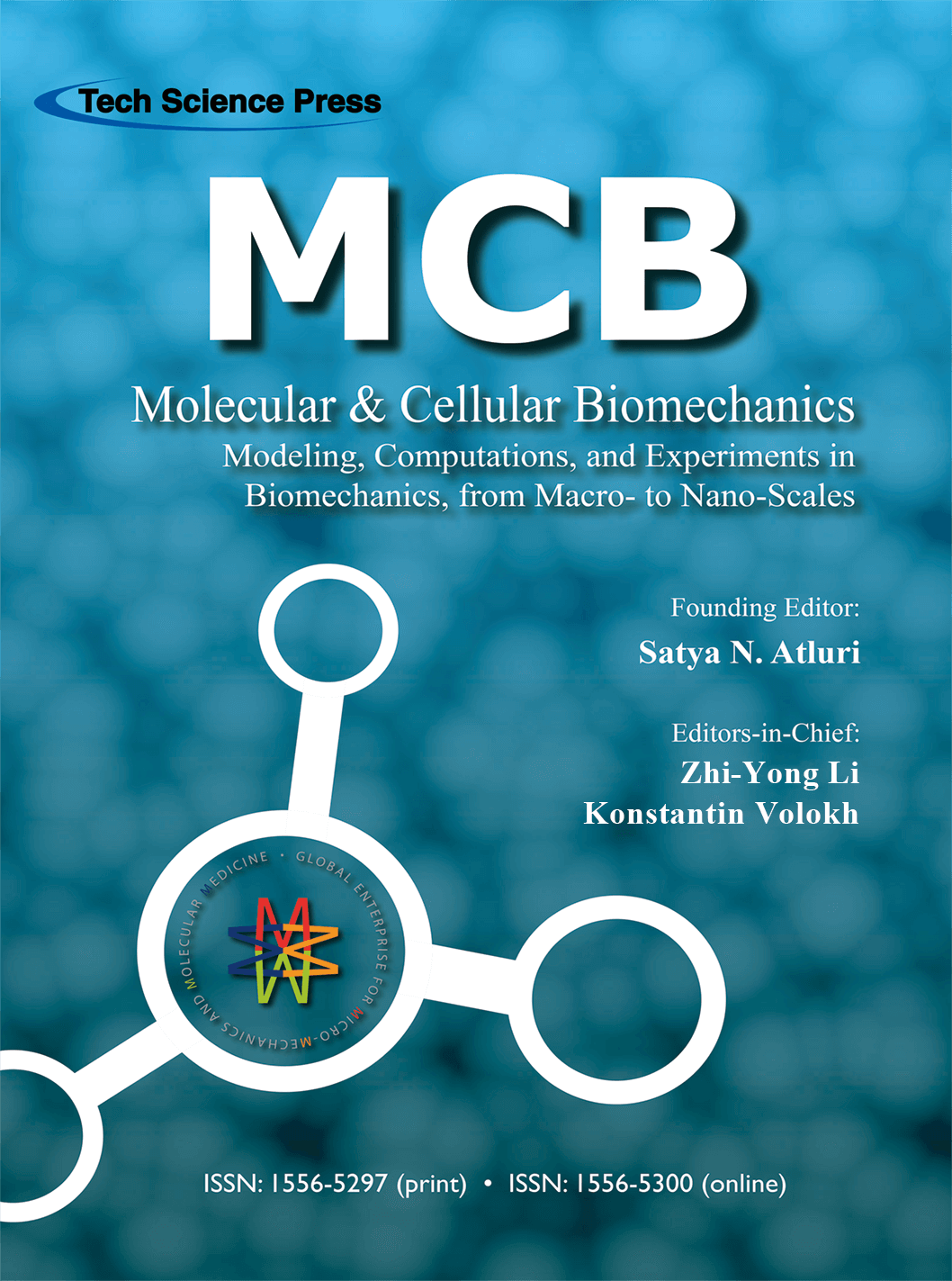
The field of biomechanics concerns with motion, deformation, and forces in biological systems. With the explosive progress in molecular biology, genomic engineering, bioimaging, and nanotechnology, there will be an ever-increasing generation of knowledge and information concerning the mechanobiology of genes, proteins, cells, tissues, and organs. Such information will bring new diagnostic tools, new therapeutic approaches, and new knowledge on ourselves and our interactions with our environment. It becomes apparent that biomechanics focusing on molecules, cells as well as tissues and organs is an important aspect of modern biomedical sciences. The aims of this journal are to facilitate the studies of the mechanics of biomolecules (including proteins, genes, cytoskeletons, etc.), cells (and their interactions with extracellular matrix), tissues and organs, the development of relevant advanced mathematical methods, and the discovery of biological secrets. As science concerns only with relative truth, we seek ideas that are state-of-the-art, which may be controversial, but stimulate and promote new ideas, new techniques, and new applications. This journal will encourage the exchange of ideas that may be seminal, or hold promise to stimulate others to new findings.
Applied Mechanics Reviews; BIOBASE (Elsevier); BIOSIS Preview-Web of Science (Clarivate Analytics); Cambridge Scientific Abstracts-Proquest; Ei Compendex/Engineering Village (Elsevier); EMBASE (Elsevier); GEOBASE (Elsevier); INSPEC (IET); Science Navigator; Scopus (Elsevier): Citescore 2022: 1.0; SNIP (Source Normalized Impact per Paper 2022): 0.157; World Textiles and Scopus; Zentralblatt fur Mathematik; Portico, etc...
Starting from Volume 21, 2024, Molecular & Cellular Biomechanics will be published by SIN-CHN SCIENTIFIC PRESS. Please make new submissions of Molecular & Cellular Biomechanics to the new system from March 1st, 2024. To view your previous submissions, please access TSP system.
 Refers to the articles published on the journal within the last three years that have gained the most viewing times to date (Statistics provided by TSP database)
Refers to the articles published on the journal within the last three years that have gained the most viewing times to date (Statistics provided by TSP database)
 Refers to articles published on the journal since 2020 that have received the most frequent citation to date (Statistics provided by TSP database)
Refers to articles published on the journal since 2020 that have received the most frequent citation to date (Statistics provided by TSP database)
 Open Access
Open Access
REVIEW
Molecular & Cellular Biomechanics, Vol.20, No.2, pp. 49-61, 2023, DOI:10.32604/mcb.2023.041173
Abstract As one of the most basal avian clades, the Confuciusornithids are ideal in revealing the early evolution of avian flight. Birds’ hindlimbs are functionally diverse and contain a wealth of information about their behavior. The hindlimb of Confuciusornis, however, has only been studied in detail in terms of functional morphology, and quantitative studies that directly assess locomotor ability are relatively lacking. This has led to certain controversies on the behavior of Confuciusornis. This paper reviews the debates over the life habits and take-off ability of Confuciusornis, which are closely related to their hindlimb function. Several methodologies adopted More >
 Open Access
Open Access
EDITORIAL
Molecular & Cellular Biomechanics, Vol.20, No.2, pp. 63-66, 2023, DOI:10.32604/mcb.2023.044564
Abstract The analysis of biomechanical characteristics plays an important role in mastering the technical characteristics of athletes, providing guidance for the formulation and prevention of sports injury training plans and providing theoretical support for research on injury prevention and stability control in the sports field. With the importance of data analysis, the application scope of artificial intelligence methods is more extensive. For example, intelligent training systems can be used for athletes’ personalized and professional training, real-time monitoring and feedback of training data, and further reduce the risk of sports injury. However, deep learning methods process a More >
 Open Access
Open Access
ARTICLE
Molecular & Cellular Biomechanics, Vol.20, No.2, pp. 67-79, 2023, DOI:10.32604/mcb.2023.042910
Abstract
The aim of this study was to investigate whether kinematic data during a countermovement jump (CMJ) could explain the post-activation performance enhancement (PAPE) effects following acute resistance exercise. Twenty-four male participants with resistance training and jumping experience were recruited and randomly assigned to either the experimental group (PAPE-stimulus) (n = 12) or the control group (n = 12). In the experimental group, participants performed 5 reps of squats at 80% 1RM to induce PAPE, while the control group received no intervention. Both groups performed three CMJ tests before (PRE) and at immediate (POST0), 4 (POST4), 8
… More >Graphic Abstract

 Open Access
Open Access
ARTICLE
Molecular & Cellular Biomechanics, Vol.20, No.2, pp. 81-94, 2023, DOI:10.32604/mcb.2023.044445
Abstract Pulmonary embolism (PE), caused by deep venous thrombosis (DVT), is a disease with high morbidity and mortality. Implantation of inferior vena cava filters is an important method for the clinical prevention of PE. The hemodynamic characteristics of filters implanted in the inferior vena cava (IVC) have a significant impact on their performance. However, IVC diameters vary among patients. This may have a direct impact on the hemodynamic properties of the filter. At present, there is no research on this kind of problem to be investigated. In this paper, the hemodynamic properties of the VenaTech convertible… More >
Graphic Abstract

 Open Access
Open Access
EDITORIAL
Molecular & Cellular Biomechanics, Vol.20, No.2, pp. 95-96, 2023, DOI:10.32604/mcb.2023.042338
Abstract This article has no abstract. More >
 Open Access
Open Access
ARTICLE
Molecular & Cellular Biomechanics, Vol.20, No.2, pp. 97-108, 2023, DOI:10.32604/mcb.2023.045804
Abstract Background: The increasing number of Tai Chi practitioners has led to extensive attention from researchers regarding the role of Tai Chi exercise. Numerous studies have been conducted through various experiments to examine the effects of Tai Chi on physical and mental improvement. Objective: This paper aims to investigate the effect of practicing Tai Chi (eight methods and five steps) on athletes’ body balance control ability from a biomechanical perspective. Methods: Twenty male athletes were randomly divided into two groups. They had no significant differences in age, height, weight, and training time. The Tai Chi group performed… More >
Graphic Abstract
